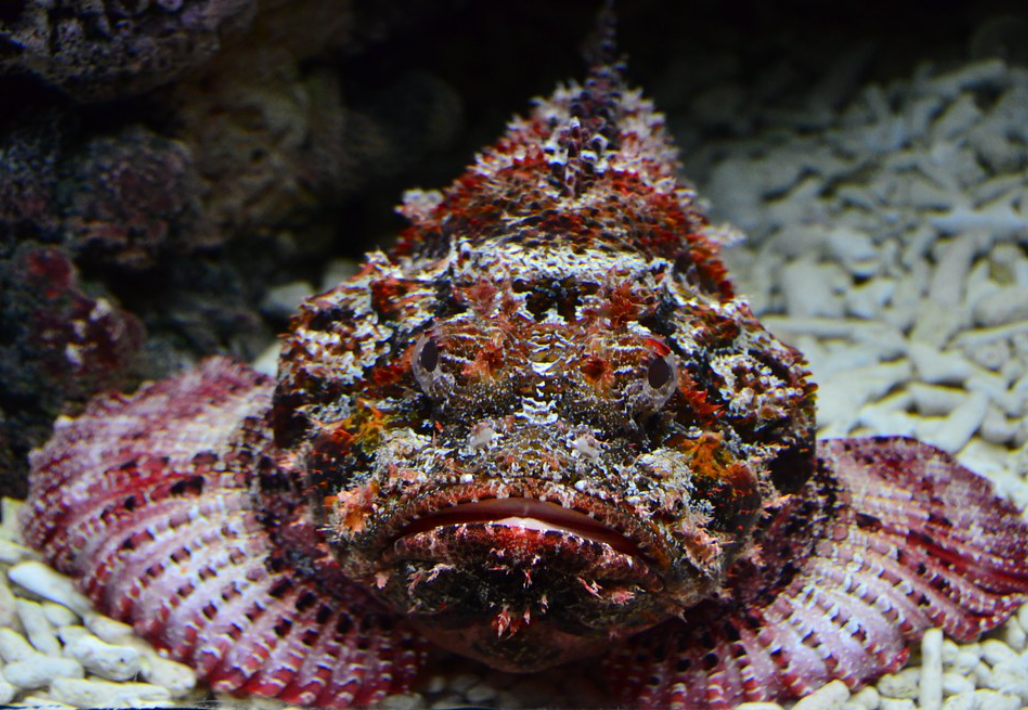Venomous animals are living species that exist as a natural part of the world and whose venoms can be powerful enough to cause death in humans. There are many different species of poisonous animals around the world, some of which are considered particularly dangerous.
The list of the world’s most poisonous animals is quite diverse. Sea snakes, the most venomous creatures in the ocean, are among the deadliest aquatic animals. Similarly, land snakes are also highly venomous, and some species are extremely dangerous to humans.
Invertebrates, such as spiders, scorpions, and snails, are also known for their venomous qualities. After snakes, these creatures are some of the world’s most poisonous animals. They use their venom to catch prey, defend themselves, or gain an advantage over competitors.
In this article, we’ll take a look at the world’s most poisonous animals, including their characteristics, how their poisons work, and their interactions with humans. Since there are so many poisonous animals around the world, the ones listed here are just a few examples.
The World’s Most Venomous Animals
Venomous animals can deliver a deadly dose of poison through bite, spit or sting. Although they tend not to attack people unless provoked, their venom remains potent.
These dangerous animals can be found around the world and have their own distinct environment. Learn more about these highly-venomous animals and what to do if you ever come into contact with one.
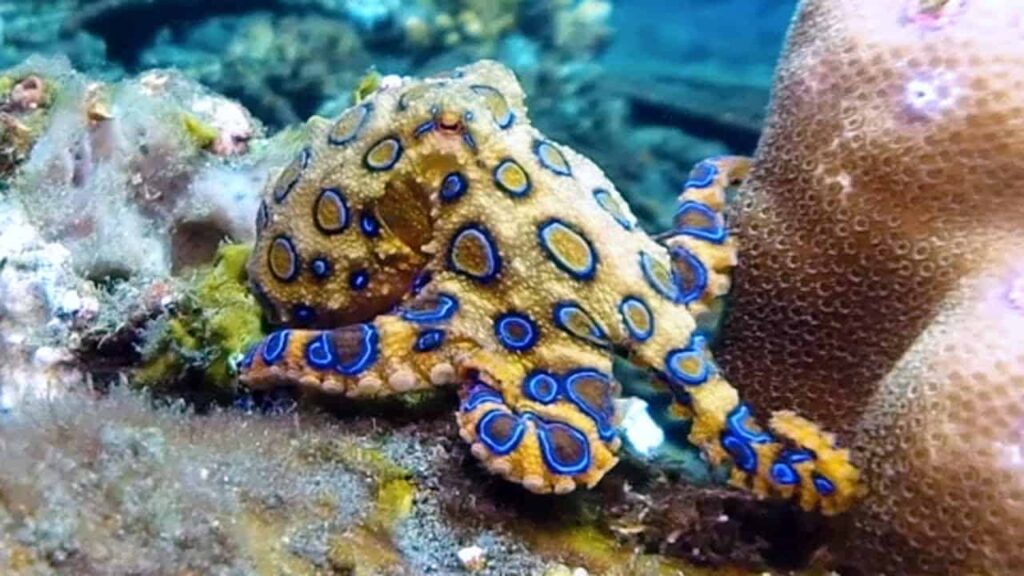
1. Blue Ringed Octopus
The Blue Ringed Octopus may not appear to be a particularly dangerous animal, but this small octopus belongs to the Hapalochlaena genus and can be found in tropical tide pools throughout the Pacific Ocean – from Australia and Japan to western Indo-Pacific regions.
These octopuses possess two poison glands that release two distinct types of poison in their saliva. One is primarily effective against prey while the other is highly toxic and used against predators.
Venom from this species of shark is created by bacteria found in the ocean, and stored in its salivary glands. It can spit it into prey’s shell or bite them to inject venom directly into their wound.
Humans experience muscle paralysis, breathing difficulty and nerve signal blocking throughout the body. This may result in nausea, vomiting and vision loss or blindness.
Therefore, it’s best to avoid these octopuses when swimming in shallow water. They are also vulnerable to climate change and human-made habitats, so keep an eye on them at all times.
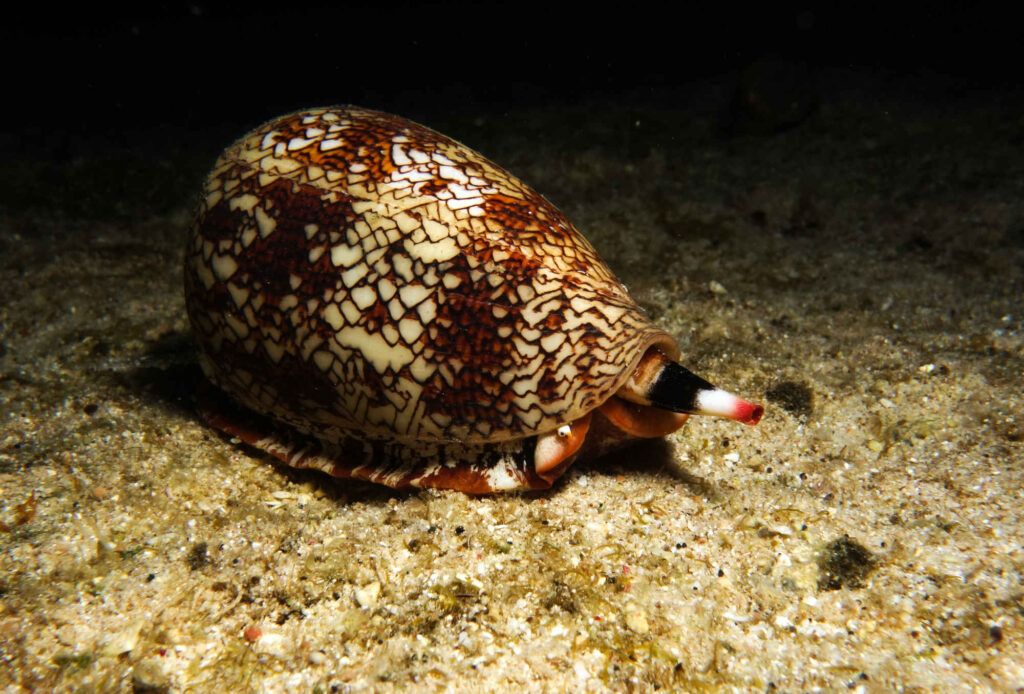
2. Cone Snail Marble Surface Snail
Cone snails are an omnipresent group of over 700 species found around the world. Their shells often resemble geometric cones and many of them sport vibrant colors in vibrant patterns.
Most cone snails feed on marine worms and other small animals, though some are predatory and hunt fish. When a cone snail senses its prey, it sticks out its sharp proboscis to shoot out a harpoon-like tooth that penetrates the skin and injects venom into its victim.
Venom from this snake can cause intense pain, tingling, numbness and swelling in the affected area. Additionally, it has the potential to paralyze respiratory muscles and even result in death.
The geograph cone snail (Conus geographus) is the most dangerous species of cone snail, carrying more than 100 different toxins that can kill a person within seconds if stepped on. Other dangerous varieties include textile and tulip snails.
Contrary to their reputation as killers, some cone snails possess anti-venom that can help humans recover from their sting. Scientists are working hard to isolate certain properties within cone snail venom so that it can be used as painkillers or vaccine against the animal’s poison.
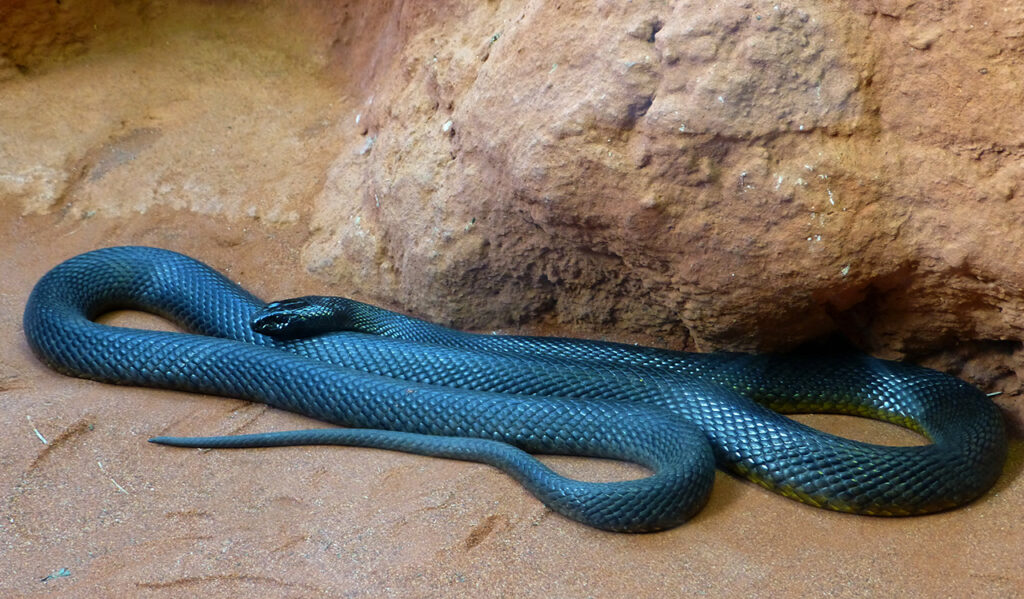
3. Inland Taipan
The Inland Taipan (Oxyuranus microlepidotus) is a snake found in Australia’s dry regions. It’s often referred to as the world’s most venomous animal due to its lethality when exposed to warm-blooded creatures like rodents.
This venom is highly potent, meaning that it can take its prey down within minutes. Unlike many venomous snakes which will strike their victims, the inland taipan can grip onto its prey and continue to bite repeatedly.
On a hunt, the taipan will corner its prey in either a burrow or crack in the ground and bite repeatedly without releasing it. This allows for swift death of its prey as they cannot even mount an offense against it.
This venom is highly neurotoxic, making it lethal to mammals. On average, an inland taipan bite delivers 44 mg-110 mg of venom per bite – much less than other snakes but still enough to cause severe damage to the nervous system.

4. Death Stalker
The deathstalker scorpion, also known as the Palestine yellow scorpion or Omdurman scorpion, is one of the world’s most deadly animals. It can be found throughout Africa and Asia, particularly in the Middle East region.
These predators typically hide under stones, wood or other debris to ambush their prey. Once they have cornered their victim, their large pincers use brute force to crush and weaken it before striking with their stinger if it fights back.
These scorpions are viviparous, meaning that they produce offspring within their bodies. Embryos born to these scorpions tend to be large and look much like their adult counterparts.
Their venom contains a powerful cocktail of neurotoxins, including chlorotoxin, charybdotoxin and three types of agitoxins. Each one of these 38 amino acid substances can have devastating effects such as respiratory or cardiovascular dysfunction.
Death stalker stings, though notorious, are usually not fatal for healthy adult humans. If you are stung by one of these venomous scorpions, contact your local emergency number immediately and then get to a hospital immediately to receive an aggressive dose of antivenin.
5. Ophiophagus Hannah
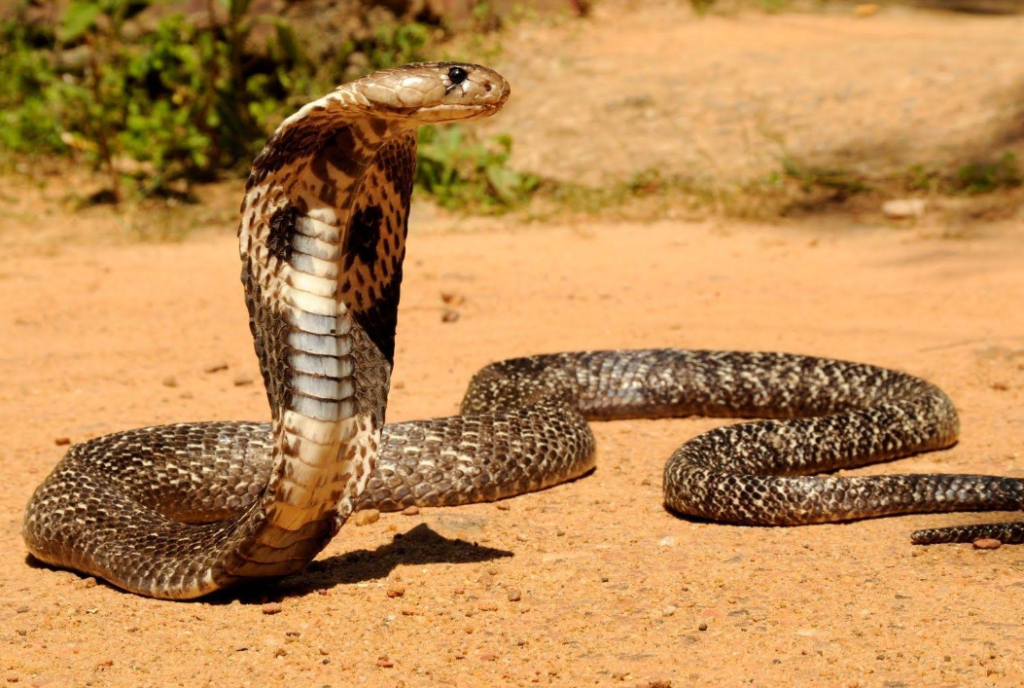
The King Cobra (Ophiophagus hannah) is the world’s largest venomous snake and an iconic symbol of India and Southeast Asia. Although aggressive, king cobras typically feed on cold-blooded animals rather than humans like other snakes do; therefore they have less potential to harm humans than other snakes do.
Venom from snakes contains neurotoxins which impair muscle contraction in rodents. These toxins can be divided into short-chain and long-chain varieties. Ophiophagus hannah venom contains the b-cytidine tetrameroxin (CTX), which has a unique action due to binding with b-adrenergic receptors and slowing heart rate in rodents.
Furthermore, a-elapitoxin-Oh3a was discovered to exhibit irreversible antagonism at avian skeletal nicotinic acetylcholine receptors (nAChR). To isolate this protein from Ophiophagus hannah neurotoxins, it underwent reverse phase HPLC on a Jupiter C18 semi-preparative column and purification via ion exchange chromatography on a Mono S strong cation exchange column before further fractionating with MALDI-TOF to produce its intact form.
A-elapitoxin-Oh3a is an a-neurotoxin that exhibits antiproliferative and cytotoxic activities against PC-3 tumor cells in mice. This substance could potentially serve as a natural cancer therapeutic agent.
6. Heloderma Suspectum Gila Monster
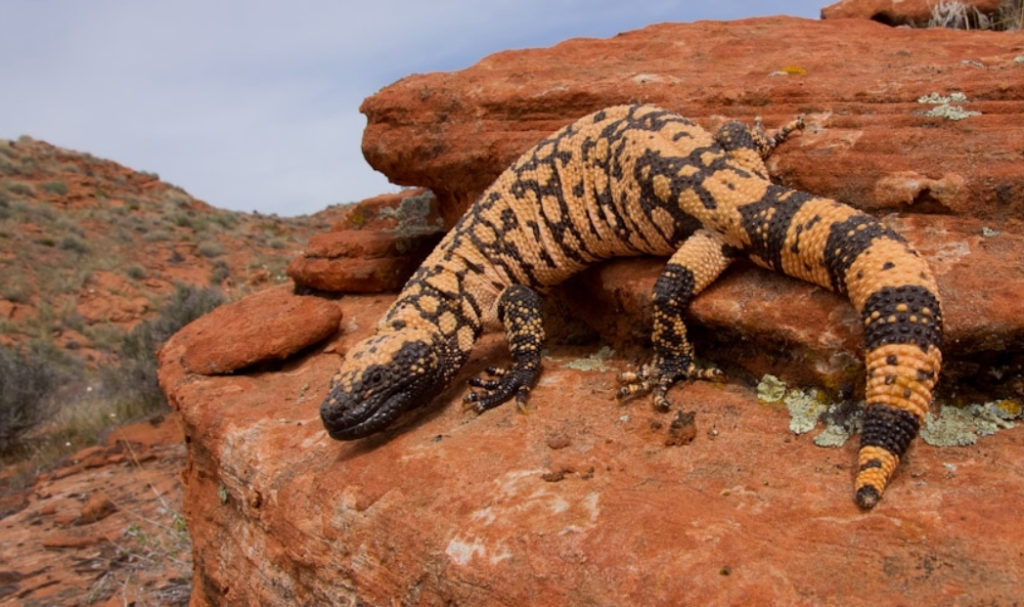
The Gila monster is one of the world’s most lethally venomous animals. It also happens to be the largest lizard in America, and its bite can cause immense pain and discomfort to humans.
The gila monster is an enormous lizard with a large head, short legs and robust tail. It boasts beaded bones called osteoderms which give it its bumpy appearance; additionally, its scales are covered in patterns of yellow or pink against black.
Spiky skins provide camouflage in desert vegetation, but the bright colors may serve as a warning to potential predators of the venom contained within glands in its lower jaw. In fact, the gila monster is one of two venomous lizards found in North America and is protected by federal law.
In the wild, the gila monster is a slow and methodical predator that hunts at night with its powerful jaws and bite. It can consume up to one-third of its body weight in one meal, storing excess calories away in its tail and abdomen for use during times of scarcity in future. Additionally, it enters a state of hibernation known as brumation during which it stores energy for future consumption.
7. Dort Poison Frog Poison Dart Frog
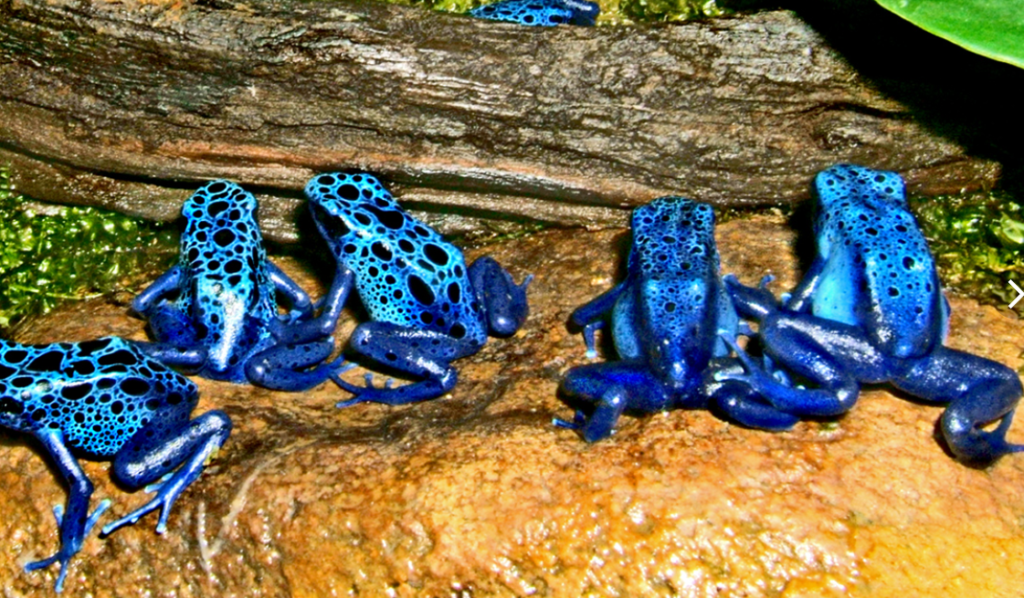
Poison dart frogs are vibrantly colored and highly toxic creatures native to Central and South America. Their vibrant hue serves as a warning to predators that these amphibians contain toxic compounds.
Poison frogs belong to the scientific family Dendrobatidae, which contains around 200 species. They are diurnal creatures living in tropical rainforests where they feed on ants, termites and small insects.
Male and female wild turkeys generally remain solitary, except during breeding or territorial fights. Males call to advertise their territories while females compete for the best places to lay their eggs.
These amphibians can be found in the tropical rainforests of Central and South America, ranging in size from less than an inch up to two inches.
Bumble bee frogs, yellow-banded poison frogs, and phantasmal frogs all share the same appearance: vibrant yellow bands on a black body.
8. Banana Spider
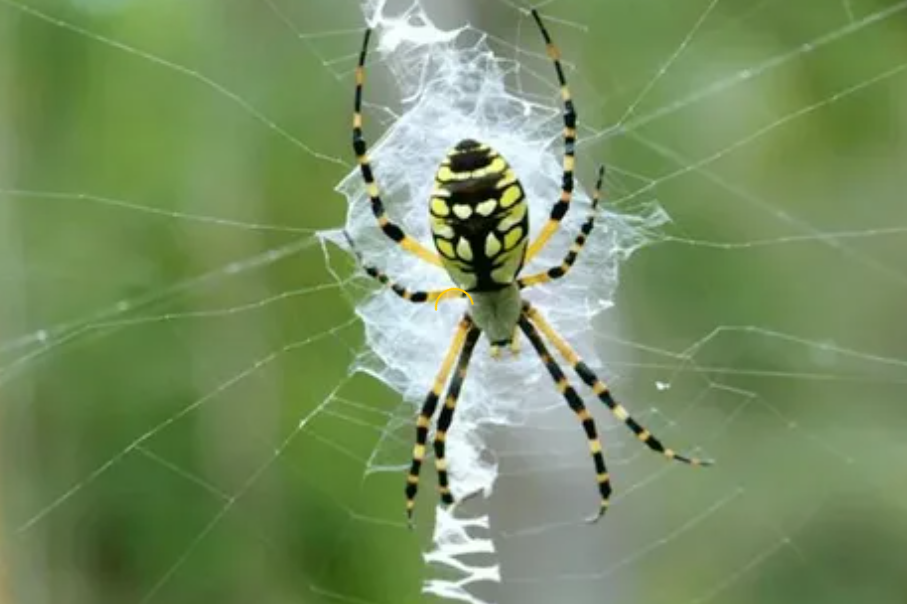
The banana spider, Nephila clavipes, is one of North America’s largest spiders. Females can grow to be two inches long without their striped legs!
Banana spiders can be found around the world, but are particularly common in southern United States and Caribbean regions. They typically construct their webs among dense vegetation where insects often pass by, providing a haven for these spiders to build their webs.
They are beneficial to the environment as they control pest populations by eating them. Furthermore, these creatures are non-poisonous and won’t bite unless provoked.
Banana spider bites usually cause only mild discomfort and redness, which disappears within 24 hours. However, if these symptoms persist, medical assistance may be needed.
Even a single bite from the most venomous banana spider species can be lethal, though this is rare. Most often, larger female spiders inject greater quantities of venom into their victims.
9. Stonefish

Stonefish are one of the most venomous animals known. They are found in coastal regions of the Indo-Pacific Ocean from Africa to Australia.
These solitary fish live on the sea floor and hide in the sand, where they can blend in so well that their predators, including other stonefish and humans, are unable to find them. They are also predators of small invertebrates, including crustaceans.
The most deadly feature of the stonefish is its dorsal fin, which contains thirteen fully covered spines (also known as hypodermic needle-like spines). These spines are hollow and attached to venom glands that discharge their contents along ducts in each spine.
10. Black mamba
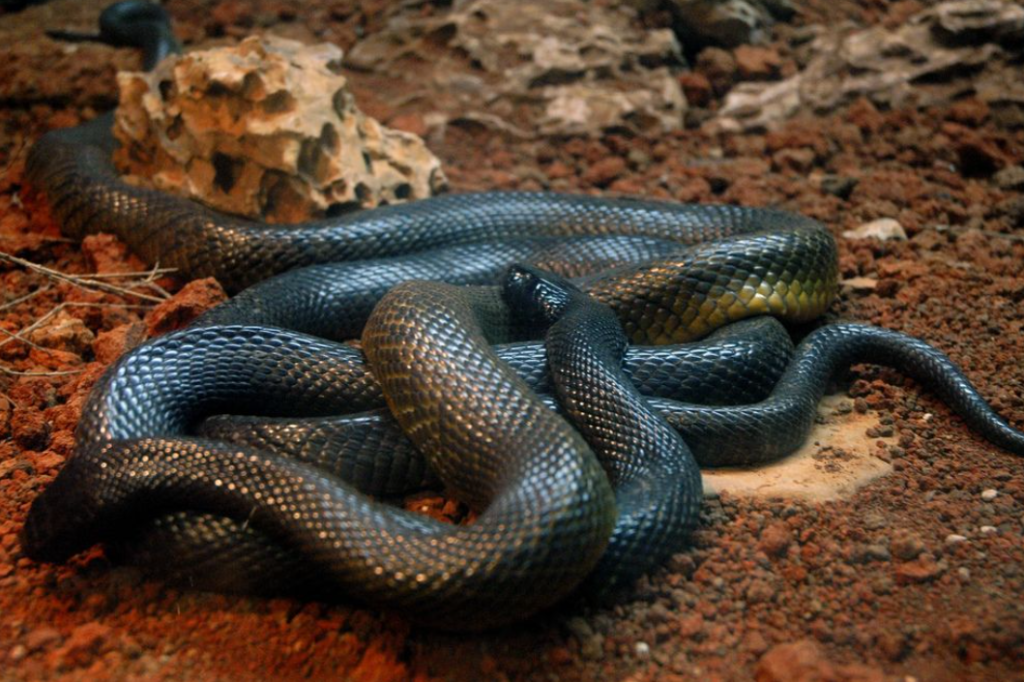
The black mamba (Dendroaspis polylepis) is one of the most venomous animals in Africa. Untreated, a bite from this snake has the potential to kill a person.
This venomous animal has long teeth that penetrate clothes and flesh. It also injects powerful doses of venom that can paralyze and eventually kill the victim.
These venomous snakes are found in South and East Africa. They prefer savannas, rocky hills and forests. They like to sleep in rock crevices, burrows or empty termite mounds.

